| Home; Aviation; Cameras; Fiction; Health&Safety; Military; MS-Apps; Non-Fiction; Submarine; Technical; Trains; Watches; Transportation |
|---|
Subject: SR-71 - Overflight of Libya
Edited by David Barth, November 21, 2008. Editor's comments are unofficial and indicated by brackets.
The author (a veteran SR-71 pilot) of the following account is not identified.
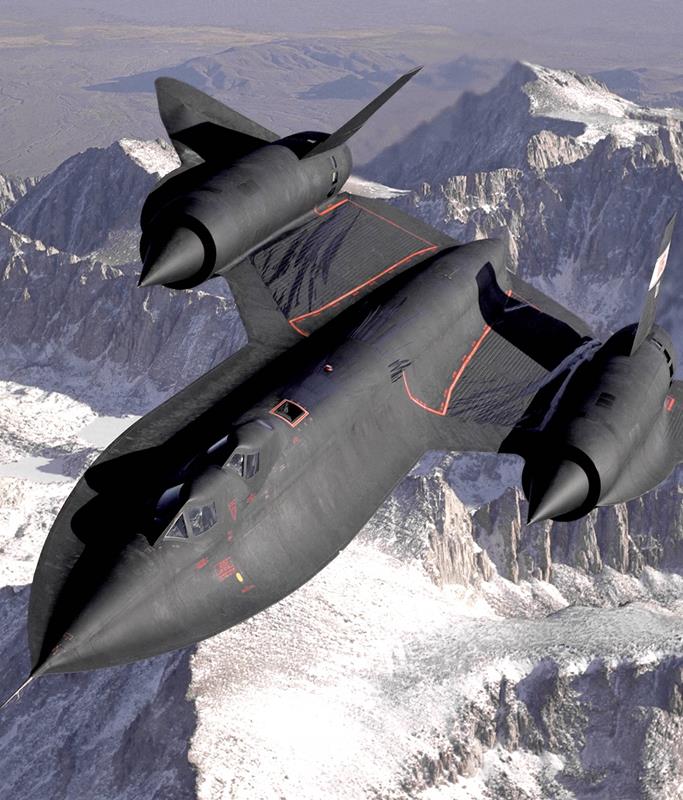 |
| SR-71 two-cockpit trainer version in flight. There were three models: SR-71B (two of these) and one SR-71C which is on display at Hill AFB. |
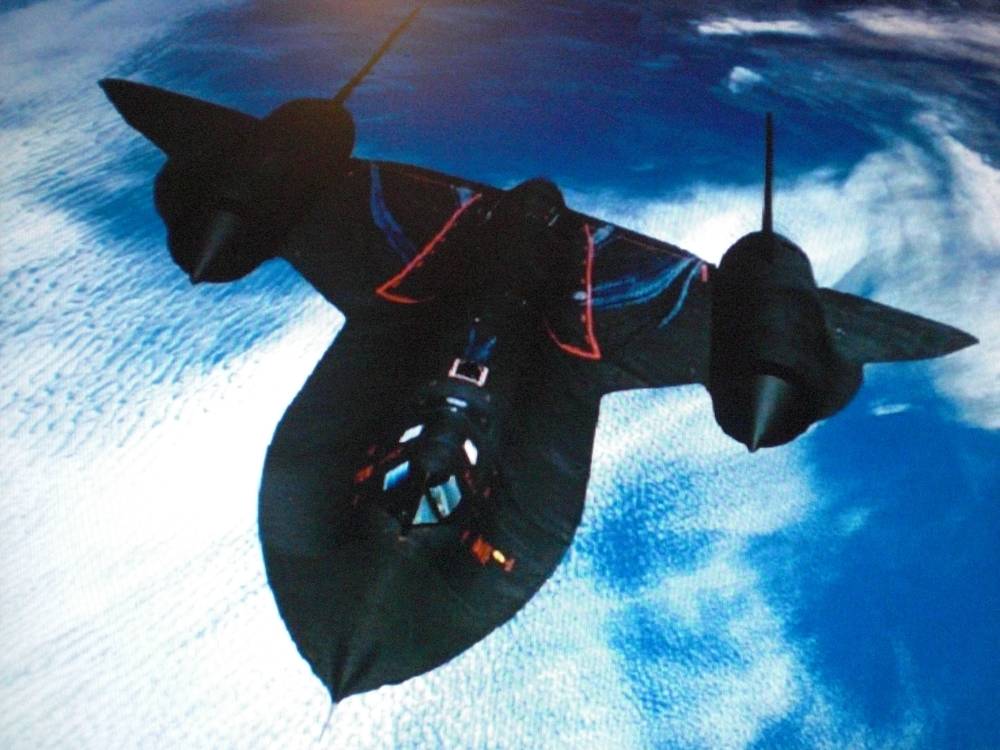 |
| SR-71 in flight. This is the reconnaissance version of which 29 were built. |
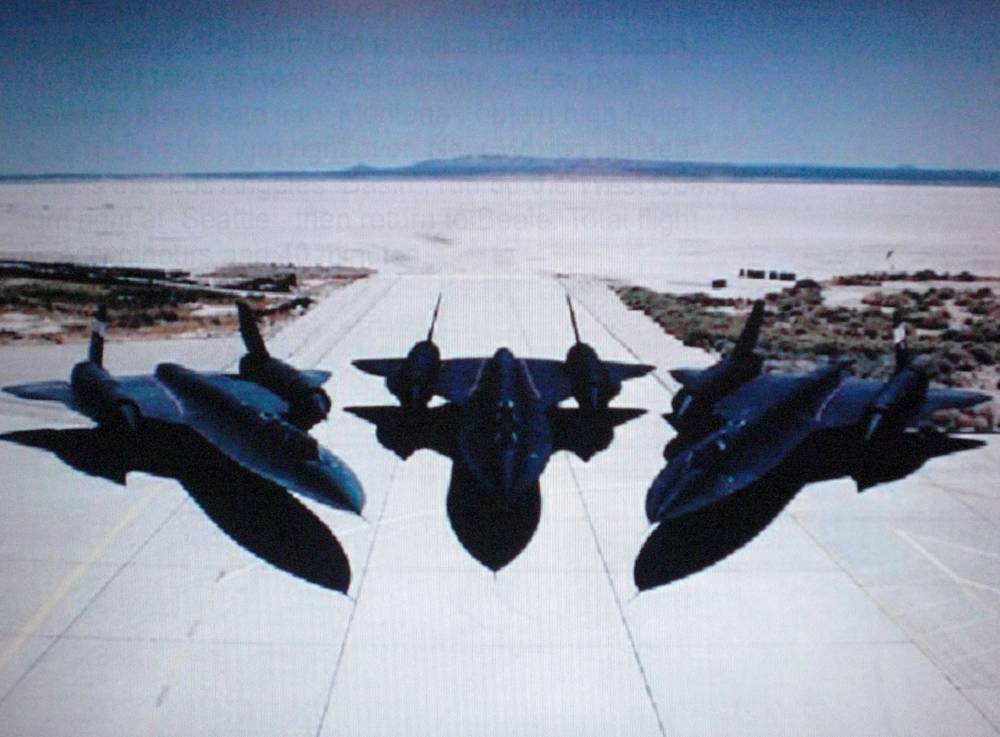 |
| SR-71 aircraft, perhaps at Groom Lake (Area 51) where the prototypes were test flown. |
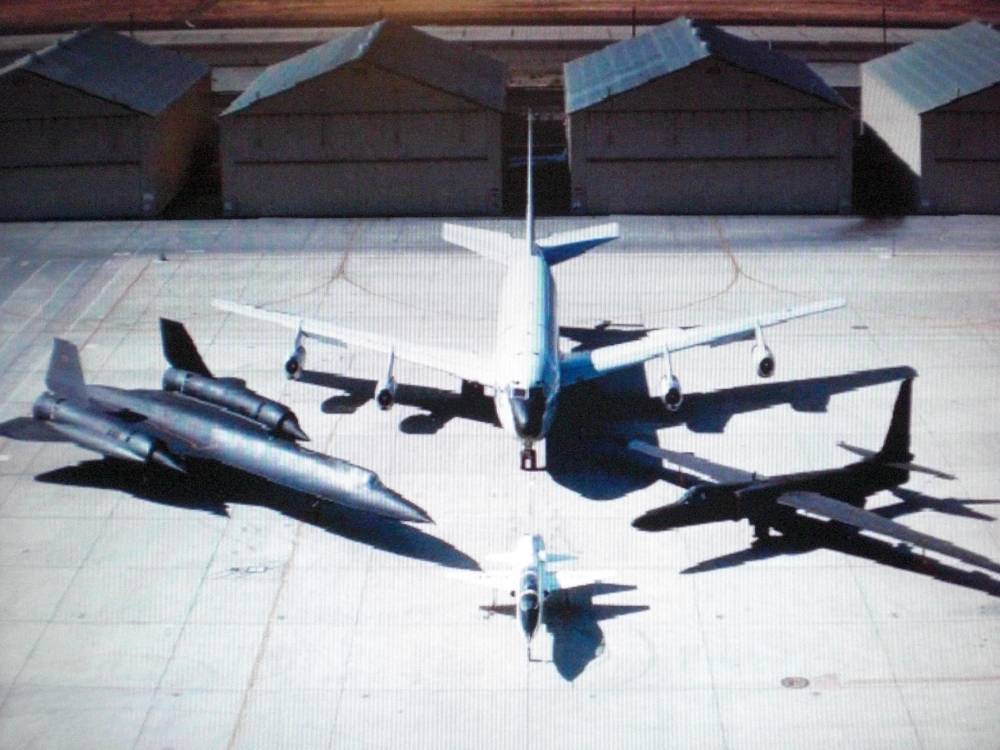 |
| From Left: SR-71, KC135Q tanker that carried the special JP-7 fuel, U2, and a T-38 used by SR-71 pilots to maintain their flying skills and as a chase plane when an SR-71 was low and slow in the immediate area. |
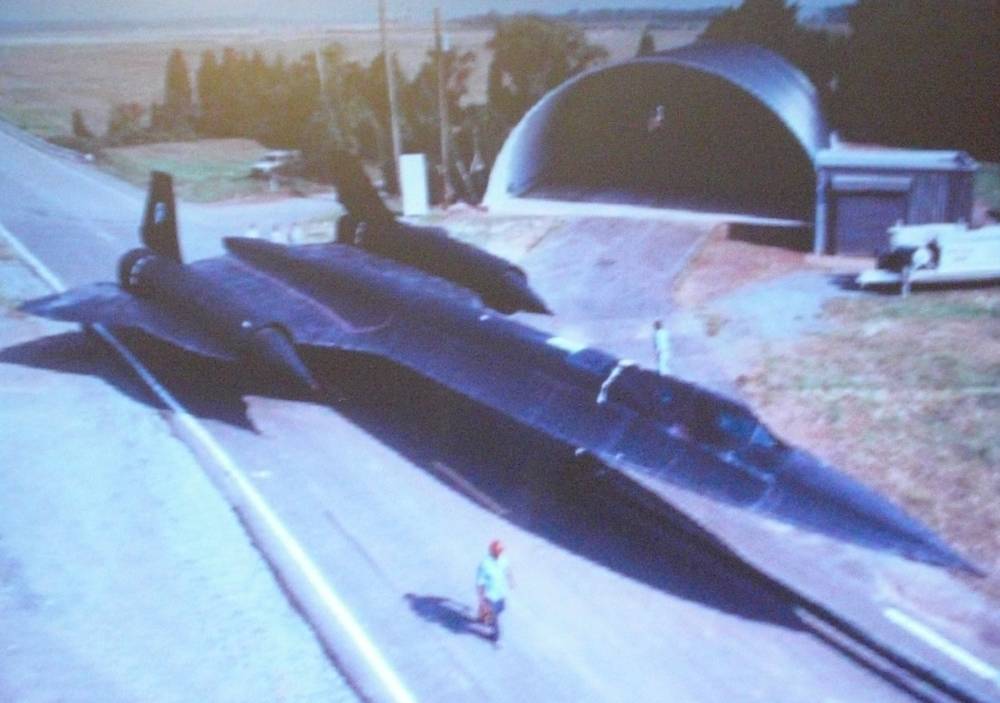 |
| SR-71 at a corrugated steel Quonset revetment. |
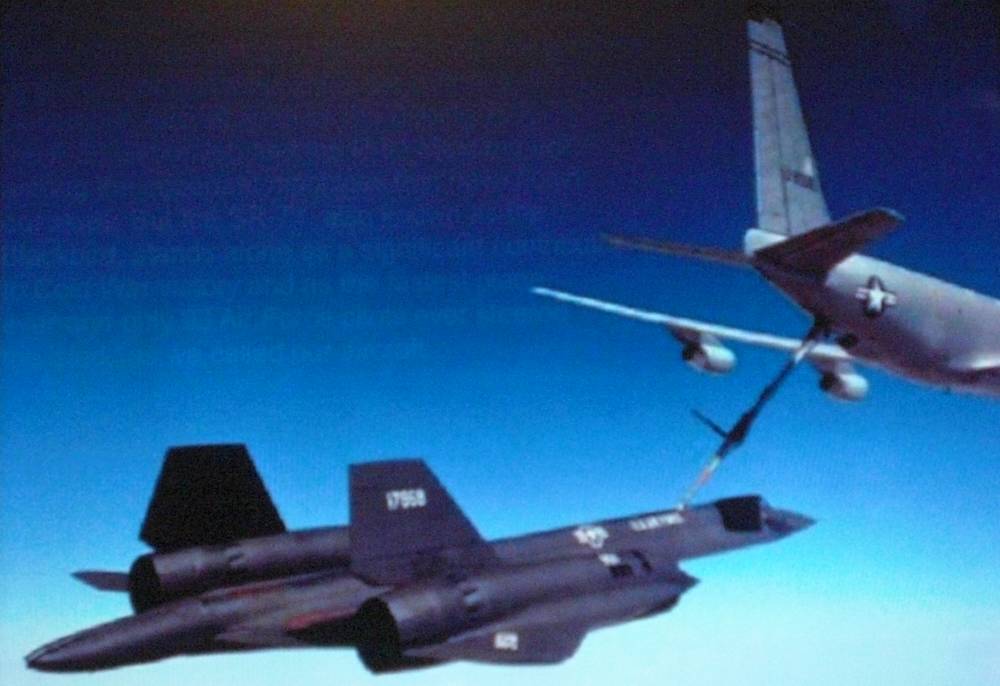 |
| SR-71 tanking. Taking on a full fuel load took about 15 minutes. |
In April 1986, following an attack on American soldiers in a Berlin disco, President Reagan ordered the bombing of Muammar Qaddafi's terrorist camps in Libya. My duty was to fly over Libya and take photos recording the damage our F-111's had inflicted. Qaddafi had established a "line of death," a territorial marking across the Gulf of Sidra, swearing to shoot down any intruder that crossed the boundary. On the morning of April 15, I rocketed past the line at 2,125 mph.
I was piloting the SR-71 spy plane, the world's fastest jet, accompanied by a Marine Major (Walt), the aircraft's reconnaissance systems officer (RSO). We had crossed into Libya and were approaching our final turn over the bleak desert landscape when Walt informed me that he was receiving missile launch signals. I quickly increased our speed, calculating the time it would take for the weapons - most likely SA-2 and SA-4 surface-to-air missiles, capable of Mach 5, to reach or altitude. I estimated that we could beat the rocket-powered missiles to the turn and stayed our course, betting our lives on the plane's performance.
After several agonizingly long seconds, we made the turn and blasted toward the Mediterranean. "You might want to pull it back," Walt suggested. It was then that I noticed I still had the throttles full forward. The plane was flying a mile every 1.6 seconds, well above our Mach 3.2 limit. It was the fastest we would ever fly. I pulled the throttles to idle just south of Sicily, but we still overran the refueling tanker awaiting us over Gibraltar.
Scores of significant aircraft have been produced in the 100+ years of flight, following the achievements of the Wright brothers in 1902. Aircraft such as the Boeing 707 and North American's F86 Sabre Jet and P-51 Mustang are among the important machines that have flown our skies. But the SR-71, also known as the Blackbird, stands alone as a significant contributor to Cold War victory and as the fastest plane ever. Only 93 Air Force pilots ever steered the "sled," as we called our aircraft. I am proud to be one of them.
The SR-71 was the brainchild of Kelly Johnson, the famed Lockheed designer who created the P-38 Lightning, the F-104 Starfighter, and the U-2. After the Soviets shot down Gary Powers' U-2 in 1960, Johnson began to develop an aircraft that would fly three miles higher and five times faster than the U-2, and still be capable of photographing your license plate. However, flying at 2,000 mph would create intense heat on the aircraft's skin.
Lockheed engineers used a titanium alloy to construct more than 90 percent of the SR-71, creating special tools and manufacturing procedures to hand-build each of the 40 planes. Special heat-resistant fuel, oil, and hydraulic fluids that would function at 85,000 feet and higher also had to be developed.
In 1962 the first Blackbird successfully flew, and in 1966, the same year I graduated from high school, the Air Force began flying operational SR-71 reconnaissance missions. I came to the program in 1983 with a sterling record and a recommendation from my commander, completing the weeklong interview and meeting Walt, my partner for the next four years. He would ride four feet behind me, working all the cameras, radios, and electronic jamming equipment. I joked that if we were ever captured, he was the spy and I was just the driver. He told me to keep the pointy end forward.
We trained for a year, flying out of Beale AFB in California, Kadena Airbase in Okinawa, and RAF Mildenhall in England. On a typical training mission, we would take off near Sacramento, refuel over Nevada, accelerate into Montana, obtain high Mach over Colorado, turn right over New Mexico, speed across the Los Angeles Basin, run up the West Coast, turn right at Seattle, then return to Beale. Total flight time: two hours and 40 minutes.
One day, high above Arizona, we were monitoring the radio traffic of all the mortal airplanes below us. First, a Cessna pilot asked the air traffic controllers to check his ground speed. "Ninety knots," ATC replied. A bonanza soon made the same request. "One-twenty on the ground," was the reply. To our surprise, an Navy F-18 came over the radio with a ground speed check. I knew exactly what he was doing. Of course, he had a ground speed indicator in his cockpit, but he wanted to let all the bug-smashers in the valley know what real speed was. "Dusty 52, we show you at 620 on the ground," ATC responded.
The situation was too ripe. I heard the click of Walt's mike button in the rear seat. In his most innocent voice, Walt startled the controller by asking for a ground speed check from 81,000 feet, clearly above controlled airspace [which terminates at 60,000 feet. -ed.]. In a cool, professional voice, the controller replied, "Aspen 20, I show you at 1,982 knots on the ground." We did not hear another transmission on that frequency all the way to the coast.
The Blackbird always showed us something new, each aircraft possessing its own unique personality. In time, we realized we were flying a national treasure. When we taxied out of our revetments for takeoff, people took notice. Traffic congregated near the airfield fences, because everyone wanted to see and hear the mighty SR-71. You could not be a part of this program and not come to love the airplane. Slowly, she revealed her secrets to us as we earned her trust.
The SR-71 was an expensive aircraft to operate. The most significant cost was tanker support, and in 1990, confronted with budget cutbacks, the Air Force retired the SR-71. [Approximately 35 tankers were stationed at Beale AFB, 3 at Kadena on Okanawa, and 2 at Mildenhall, England. -ed.]
The SR-71 served six presidents, protecting America for a quarter of a century. Unbeknownst to most of the country, the plane flew over North Vietnam, Red China, North Korea, the Middle East, South Africa, Cuba, Nicaragua, Iran, Libya, and the Falkland Islands. On a weekly basis, the SR-71 kept watch over every Soviet nuclear submarine and mobile missile site, and all of their troop movements. It was a key factor in winning the Cold War.
I am proud to say I flew about 500 hours in this aircraft. I knew her well. She gave way to no plane, proudly dragging her sonic boom through enemy backyards with great impunity. She defeated every missile, outran every MiG, and always brought us home. In the first 100 years of manned flight, no aircraft was more remarkable. The Blackbird had outrun nearly 4,000 missiles, not once taking a scratch from enemy fire. On her final flight, the Blackbird, destined for the Smithsonian National Air and Space Museum, sped from Los Angeles to Washington in 64 minutes, averaging 2,145 mph and setting four speed records.